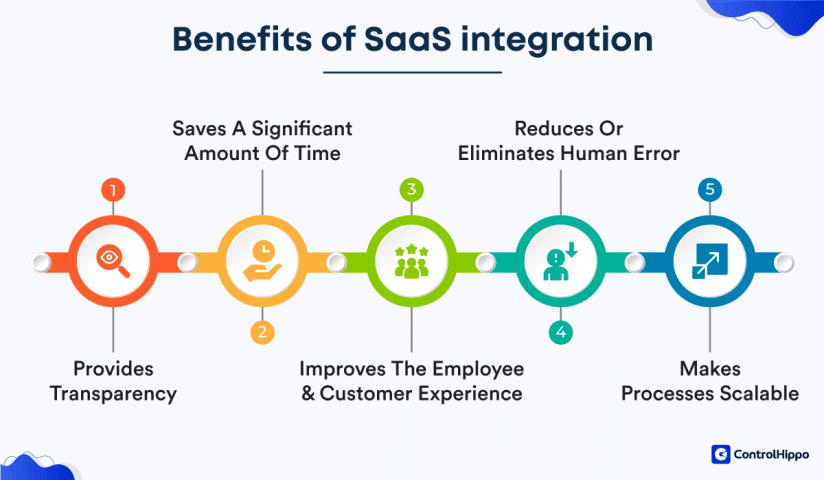Introduction
Did you know that 80% of successful businesses attribute a significant part of their triumph to strategic collaboration? Integration partnerships have become the secret force for driving innovation and achieving unparalleled heights in today's competitive landscape.
Customers expect seamless omnichannel experiences, employees demand interconnected tools, and organizations seek holistic views by linking data across systems. Increasingly, forging strategic integration partnerships is key to meeting these expectations and unlocking major competitive advantages. According to MuleSoft, organizations using APIs and integrations grow revenue 37% faster on average.
So, grab your magnifying glass, because in this blog, we're diving deep into the captivating role of integration partnerships. We will also discuss how they can take your business on an exhilarating journey of boundless possibilities!
What are Integration Partnerships?

Integration partnerships are like the ultimate team up of businesses, coming together. It's when two or more companies combine their powers, skills, and resources to achieve common goals and conquer new frontiers.
Integration partnerships come in various forms too! Whether it's a comarketing collaboration, technology integration, or strategic alliances, businesses can find various benefits of integration partnerships.
Role of Integration Partnerships in Businesses
Integration partnerships in business are like teaming up with others to boost creativity, reach new customers, and share the workload. It's a recipe for success and innovation. So, integration partnerships play an important role in businesses by allowing them to:
Accelerate Innovation
When different companies bring their innovative ideas and expertise to the table, it's like a brainstorming session. Together, they can whip up groundbreaking products and services that'll leave the competition in the dust!
Expanding Your Reach
That's the role of integration partnerships– they open doors to new markets and customers previously out of reach. It's like tapping into a whole new universe of possibilities and having your message heard by galaxies of potential customers!
Sharing the Burden
Running a business can sometimes be overwhelming, but a diligent integration partnership strategy can lighten the load. Roles of integration partnership include sharing resources, costs, and responsibilities, which means less stress and more time to focus on what you do best. A diligent integration partnership strategy can help create amazing products!
Where to Find Integration Partners?
Here are some recommendations on where to look for potential integration partners for the perfect integration partnership strategy:
- Industry Events & Conferences: Network with other companies in your space to find natural integration opportunities. Industry events often have partnership zones.
- Developer Communities: Engage developer communities centered around popular platforms like Shopify and Salesforce to find enthusiastic partners.
- Marketplaces: Many technology providers offer integration marketplaces (e.g. Salesforce AppExchange) to connect with vetted partners.
- Industry Associations: Joining associations like the Cloud Integration Network helps partner with companies focused on integrations.
- Customer & Employee Feedback: Listen to your users for what additional capabilities they want to be integrated with your platform.
- Competitor Partnerships: Analyze companies competing with you for potential cooperation partnerships that benefit both sides.
The best integration partners align strategically, technically, and culturally to provide unique value jointly. Cast a wide net across these sources to uncover ideal matches.
Suggested Reading:
Why BotPenguin is the Ideal Choice for Integration Partners?
Factors To Consider Before an Integration Partnership
The decision to pursue an integration partnership should be made carefully considering various factors. Here are some points to consider:
- Complementary Expertise: Seek integration when your partner brings skills or resources that complement your offerings. It enhances the overall value proposition. For example, it makes sense for a payment provider to partner with a chatbot business to allow their customers to make payments through chat and elevate shopping experience.
- Market Demand Analysis: Assess the prevailing market trends and customer needs to determine the demand for integrated solutions. Ensure the integration aligns with evolving market preferences, ensuring a broader customer base.
- Stability and Maturity Assessment: Evaluate the financial stability of both companies before integration, minimizing potential risks. Understand the maturity of their business models, reducing uncertainties and enhancing the chances of a successful partnership.
- Alignment of Shared Goals: Collaborate with partners who share long-term objectives and commit to joint success and growth. Establish a shared vision to prevent potential conflicts and foster a harmonious and enduring collaboration.
- Technological Readiness Evaluation: Conduct a thorough assessment of technical compatibility to identify potential integration challenges and proactively address them. Verify that both systems can work together seamlessly to ensure seamless integration without disrupting day-to-day operations.
- Customer-Centric Approach: Analyze how integration enhances the user experience and addresses specific customer pain points. Ensure the integration aligns with a customer-centric strategy, emphasizing improvements in satisfaction and usability.
- Strategic-Timing and Resource Consideration: Assess the readiness of internal resources and determine the ideal timing for integration. Avoid premature integration that may strain the team, ensuring that resources and capacity are aligned with the demands of the partnership.
- Legal and Financial Alignment: Establish clear legal terms and agreements to avoid misunderstandings and disputes. Define revenue-sharing models transparently and determine intellectual property ownership early to foster a foundation of trust.
- Capitalizing on Competitive Advantage: Identify how integration creates a unique advantage and ensure preparedness to capitalize on it. Align integration with broader strategic initiatives to maximize its impact and contribute to a distinct competitive edge.
- Metrics for Success: Define key performance indicators (KPIs) to measure the partnership's success. Establish measurable goals for the collaboration, ensuring the ability to track and analyze the impact of integration effectively.
Ultimately, the right time for an integration partnership is when all these elements align to create a mutually beneficial collaboration.
Suggested Reading:
Building an Integration Partnership: Key Factors & Must-Haves
How to Forge Successful Integration Partnerships?
Integration partnerships can be a great way to grow your business and achieve your goals. However, it's important to forge successful integration partnerships.
Here are some tips for forging successful integration partnerships between companies:
- Strategic Alignment: Ensure a shared vision and objectives, securing executive sponsorship.
- Clear Responsibilities: Define roles, plan technical processes, and establish communication frameworks.
- Mutual Value Proposition: Develop a compelling case highlighting benefits for both partners.
- Performance Tracking: Set measurable goals, co-market solutions, and track progress through key results.
- Adaptability and Growth: Foster cultural compatibility, take an iterative approach, and explore continuous enhancements for a thriving partnership.
With thoughtful planning, commitment, and chemistry, integration alliances can drive tremendous innovation and mutual value.
Conclusion
Integration partnerships can help you solve customer problems, save time and money, and grow your business. A survey by Capterra found that 94% of businesses implementing integration partnerships have been satisfied with the results.
When choosing an integration partner, it is important to consider the compatibility of the products or services, the integration's security, the integration's cost, and the integration's support.
If you are looking for a good integration partner to help you improve your business, BotPenguin is the perfect integration partner for you.
BotPenguin offers a wide range of integrations, seamless integration, expert support, customized solutions, and a reliable, secure, and scalable platform. BotPenguin’s AI chatbots can help you to improve customer satisfaction, reduce costs, improve efficiency, and increase sales.
So, keep exploring the benefits of integration partnerships, innovating, and unlocking new horizons of success!
Suggested Reading:
Frequently Asked Questions (FAQs)
What benefits do integration partnerships bring to businesses?
Integration partnerships enhance innovation, broaden customer reach, and alleviate business burdens by combining resources, skills, and expertise.
Why are customer-centric approaches crucial in integration partnerships?
Customer-centric integration enhances user experience, addresses pain points, and aligns with evolving market demands, ensuring a broader customer base.
How can businesses find suitable integration partners?
Explore industry events, developer communities, marketplaces, industry associations, and customer/employee feedback to identify partners with aligned goals and values.
What factors should be considered before pursuing an integration partnership?
Complementary expertise, market demand analysis, stability assessment, shared goals, and technological readiness ensure a successful integration partnership.
How does BotPenguin stand out as an integration partner?
BotPenguin offers seamless integration, expert support, and a secure platform. Its diverse integrations enhance customer satisfaction, reduce costs, and increase business efficiency.

